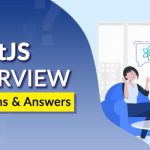Software engineering focuses on designing, developing, and maintaining software. This compilation provides questions and answers covering essential topics like design, testing, models, and methodologies to deepen understanding and prepare for exams.
Software Engineering Fundamentals
Question: What is software engineering?
Answer: Software engineering is a discipline focused on designing, developing, and maintaining software using systematic processes and methodologies.
Question: Why is software engineering important?
Answer: It ensures the creation of reliable, efficient, and scalable software solutions while optimizing costs and time.
Question: What is the software development lifecycle (SDLC)?
Answer: SDLC is a process framework for planning, developing, testing, and maintaining software systems.
Question: What are the main phases of SDLC?
Answer: The main phases include requirement analysis, design, implementation, testing, deployment, and maintenance.
Question: Define software quality.
Answer: Software quality is the measure of how well software meets requirements, is free from defects, and satisfies user expectations.
Question: What is the difference between validation and verification?
Answer: Validation ensures the product meets user needs, while verification checks if it meets specified requirements.
Question: What is modularity in software design?
Answer: Modularity is the practice of dividing software into smaller, manageable, and independent components.
Question: What is software testing?
Answer: Software testing is the process of evaluating a software system to identify and fix bugs and ensure it meets requirements.
Question: What is the role of a software engineer?
Answer: A software engineer designs, develops, tests, and maintains software systems using engineering principles.
Question: What are functional requirements?
Answer: Functional requirements specify the actions a system must perform to meet user needs.
Question: What are non-functional requirements?
Answer: Non-functional requirements define system attributes like performance, security, and reliability.
Question: What is software prototyping?
Answer: Software prototyping is creating an early model of a system to understand and refine its requirements.
Question: What is agile methodology?
Answer: Agile methodology emphasizes iterative development, collaboration, and adaptability in software projects.
Question: What is a use case?
Answer: A use case describes how a user interacts with a system to achieve a specific goal.
Question: Define software metrics.
Answer: Software metrics are quantitative measures used to assess software development and performance.
Question: What is a software defect?
Answer: A software defect is an error or flaw in a program that causes incorrect or unintended results.
Question: What is a feasibility study in software engineering?
Answer: A feasibility study assesses the practicality and viability of a proposed software project.
Question: What is configuration management?
Answer: Configuration management tracks and controls changes in software to maintain integrity over time.
Question: What is a design pattern?
Answer: A design pattern is a reusable solution to a common software design problem.
Software Development Models
Question: What is the waterfall model?
Answer: The waterfall model is a sequential development approach where each phase must be completed before moving to the next.
Question: What are the drawbacks of the waterfall model?
Answer: It is inflexible, assumes requirements won’t change, and delays testing until the end of development.
Question: What is the iterative model?
Answer: The iterative model involves repeating software development phases to refine the system progressively.
Question: What is the V-model in software engineering?
Answer: The V-model emphasizes verification and validation in a sequential development approach.
Question: What is the spiral model?
Answer: The spiral model combines iterative development with risk analysis in a cyclic process.
Question: What is the RAD model?
Answer: The Rapid Application Development (RAD) model emphasizes quick development and user feedback through prototypes.
Question: What is the agile model?
Answer: Agile focuses on flexibility, collaboration, and incremental delivery of software.
Question: What is DevOps?
Answer: DevOps integrates development and operations teams to automate and improve the software delivery process.
Question: What is the difference between agile and waterfall models?
Answer: Agile is iterative and flexible, while the waterfall is linear and rigid.
Question: What is the purpose of a project backlog in agile?
Answer: The project backlog lists tasks and features to be completed in a software project.
Question: What is a sprint in agile?
Answer: A sprint is a time-boxed period during which specific tasks are completed in agile development.
Question: What is a user story?
Answer: A user story is a short, simple description of a feature or requirement from the user’s perspective.
Question: What is scrum methodology?
Answer: Scrum is an agile framework for managing and completing complex projects.
Question: What is pair programming?
Answer: Pair programming is a practice where two developers work together at one workstation to write code.
Question: What is the importance of retrospectives in agile?
Answer: Retrospectives help teams review their work process and identify areas for improvement.
Question: What is the purpose of continuous integration?
Answer: Continuous integration ensures code changes are automatically built, tested, and integrated into the main branch.
Question: What is Kanban in software development?
Answer: Kanban is a visual method for managing workflows and tasks in software projects.
Question: What is a burn-down chart?
Answer: A burn-down chart tracks work remaining in a sprint or project over time.
Question: What is test-driven development (TDD)?
Answer: TDD is a practice where tests are written before the code to guide development.
Question: What are key advantages of agile development?
Answer: Agile improves flexibility, collaboration, user satisfaction, and product quality.
Software Testing and Quality Assurance
Question: What is the purpose of software testing?
Answer: Software testing ensures that a system functions correctly and meets specified requirements.
Question: What is black-box testing?
Answer: Black-box testing evaluates software functionality without knowledge of its internal code.
Question: What is white-box testing?
Answer: White-box testing involves testing the internal structures and logic of the code.
Question: What is regression testing?
Answer: Regression testing verifies that changes or updates to software do not introduce new defects.
Question: What is unit testing?
Answer: Unit testing checks individual components of software for correctness.
Question: What is integration testing?
Answer: Integration testing evaluates the interaction between integrated software modules.
Question: What is system testing?
Answer: System testing validates the complete and integrated software system.
Question: What is acceptance testing?
Answer: Acceptance testing ensures the software meets user requirements and is ready for deployment.
Question: What is exploratory testing?
Answer: Exploratory testing involves simultaneous learning, test design, and execution without pre-defined scripts.
Question: What is test automation?
Answer: Test automation uses software tools to execute tests, compare results, and report outcomes.
Question: What are test cases?
Answer: Test cases are specific conditions under which a tester evaluates software functionality.
Question: What is a defect life cycle?
Answer: The defect life cycle tracks the stages of a software defect from discovery to resolution.
Question: What is performance testing?
Answer: Performance testing evaluates the responsiveness, scalability, and stability of a system under load.
Question: What is load testing?
Answer: Load testing assesses how a system performs under expected user loads.
Question: What is stress testing?
Answer: Stress testing evaluates system behavior under extreme conditions.
Question: What is usability testing?
Answer: Usability testing checks how easy and efficient a system is for users to interact with.
Question: What is smoke testing?
Answer: Smoke testing verifies basic functionality after a new build is deployed.
Question: What is beta testing?
Answer: Beta testing involves real users testing software in a live environment before release.
Question: What is a bug report?
Answer: A bug report documents a software issue, including its description, steps to reproduce, and impact.
Exploring these questions and answers helps in grasping key software engineering concepts. Covering various topics ensures a comprehensive understanding to excel in studies and practical applications.
Latest Posts
- Step-by-step guide to download and apply for jee mains admit card 202
- Comprehensive 2025 government holidays and recruitment details for job seekers
- JEE Mains Admit Card 2025: Your Step-by-Step Guide to Downloading the Hall Ticket
- Everything You Need to Know About 2025 Government Holidays Recruitment
- Comprehensive Guide to rrb d group recruitment 2025 – Eligibility, Vacancies, and Application
- Detailed guide to nps trust recruitment 2025 vacancies, eligibility and apply process
- Comprehensive guide to hpcl recruitment 2025 notification, vacancies, and application process
- ignou bed admission 2025 complete recruitment guide with eligibility and process
- Comprehensive Guide to Indian Army Agniveer Recruitment 2025 Notification and Jobs
- Everything You Must Know About CBSE Board Exams 2025 Changes & New Rules






